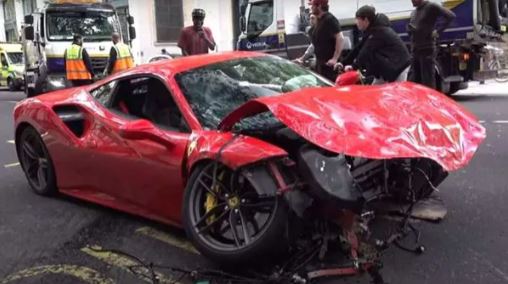
I participated in a call the other day about financial inclusion and the moderator said that giving people banking was like giving a child the keys to your Ferrari. Without education, they would crash it so, rather than financial inclusion, you need inclusive finance.
It was an interesting perspective, and made me think about the similarities between driving and banking. To drive a car, you need to take a test; to open a bank account, you fill in a form. To drive a car, you probably need to spend a few months learning; to open a bank account, you just need to know your name and address. To drive a car, you have to have a license and insurance; to have a bank account, you just need to have some money.
I guess we’re getting at financial literary, or the lack of it. In schools worldwide, children are taught very little about money. When they leave the educational world, they discover that – apart from relationships – it’s the most important thing in their lives.
But then, continuing the driving theme, what car do people need?
Some need a basic account – maybe it’s a VW Polo; some need an account with more bells and whistles – a VW Golf; some want a family account – a VW Touareg; some need a nice account with coffee and biscuits – a VW Passat; and some are high net worth and need an Audi where, again, there are different models for different needs.
I quite like this analogy as we too often think that banks accounts are a singular, homogenous thing. They’re not. They may all look the same, but there are nuances.
In particular, do you want a manual or automatic account is a bit like do you want active or passive investing. It’s your choice. Maybe too many choices, but it is a choice.
However, when I take this metaphor to the nth degree, it starts to struggle. With choosing a car, there are many models on offer in each classification. In banking, each category offers limited choice. The reason for this is that, when choosing a vehicle, there are global providers who operate and distribute in almost every country of the world; in banking, you only have the choice of the mainstream banks licensed in that country.
The result of this is that the mainstream banks of each country align massively in product, service, benefits, rates and more. It’s why they all appear to be the same.
And this is a fault of how the system works: we don’t focus enough on making a difference. It’s why banks are accused of being dumb pipes, and why nearly every bank seems to offer the same things. In fact, it intrigues me the hoo-hah over Buy Now, Pay Later when (a) it’s just deferring credit, like we do with a credit card; and (b) at least it’s changed the idea of credit, unlike launching yet another credit card.
Maybe I’m being too simplistic, but the fact is that the huge choice of makes and models of cars should be what we see in banking. The reason we don’t is that launching a bank is far more difficult than making a car … or is it?
Meantime, going back to the similarity between driving and banking, if you did start with your first car being a Ferrari, then either your dad is incredibly wealthy or you’re a bitcoin billionaire. Either way, take some lessons whether you’re driving or investing. Otherwise, you might be a dogecoin loser.
Chris M Skinner
Chris Skinner is best known as an independent commentator on the financial markets through his blog, TheFinanser.com, as author of the bestselling book Digital Bank, and Chair of the European networking forum the Financial Services Club. He has been voted one of the most influential people in banking by The Financial Brand (as well as one of the best blogs), a FinTech Titan (Next Bank), one of the Fintech Leaders you need to follow (City AM, Deluxe and Jax Finance), as well as one of the Top 40 most influential people in financial technology by the Wall Street Journal's Financial News. To learn more click here...

